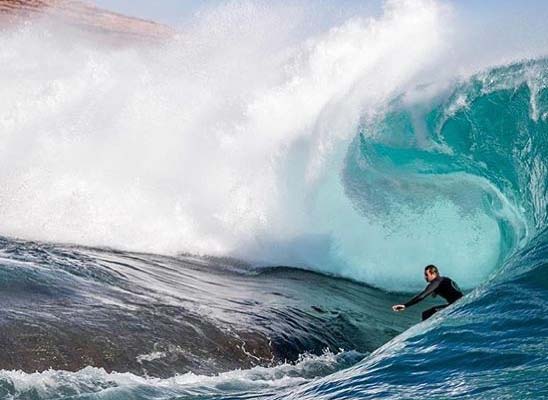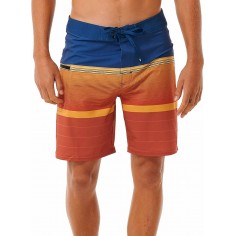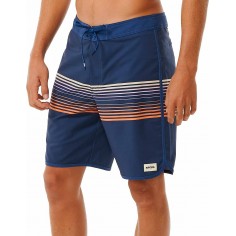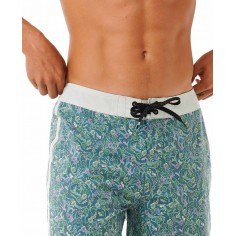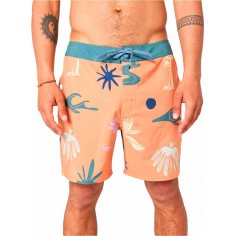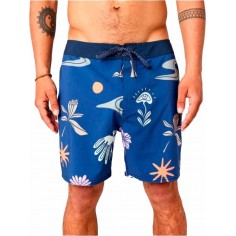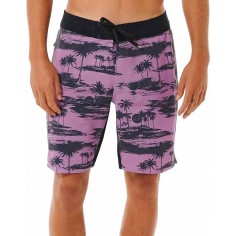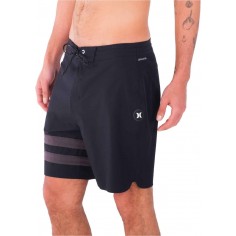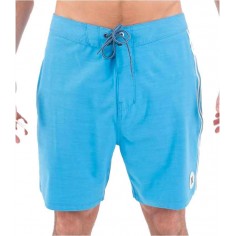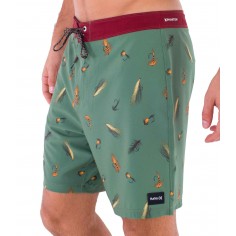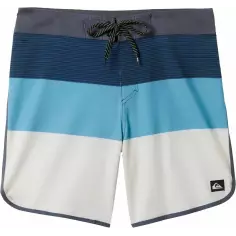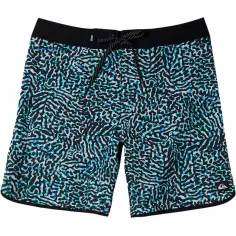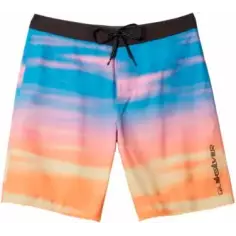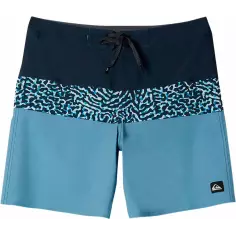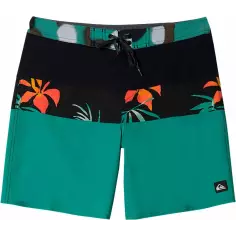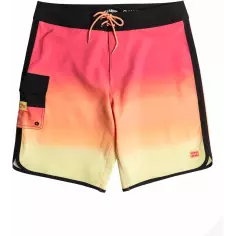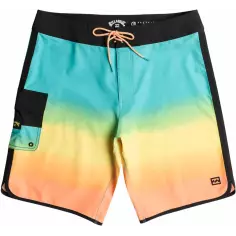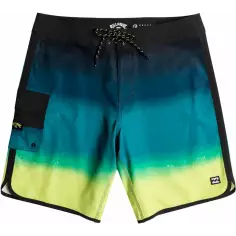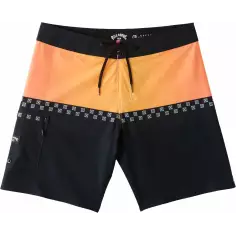If rock and reef bottoms are obviously more dangerous to surf than waves that break on a sandy bottom, they are usually better in quality.
And if you are going to travel to Indonesia, 99% of the waves that you are going to surf will break on reef. That is why in this article we are going to give you 7 tips to reduce the risk of hurting yourself when you surf on a rocky bottom.
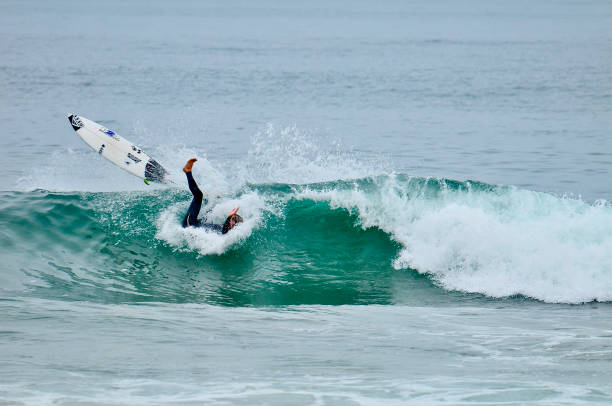
2. Learn how to fall
The shallower and the sharpest the reef is, the more important s to fall well. Forget to jump off the board with both feet in front of you. The objective is NOT to touch the bottom, and for this there are some techniques:
- Put yourself in star mode or in fetus position protecting your head when you fall
- If you see that the wave close out, go out of the wave. Go up to the lip of the wave, and jump behind the wave. When the wave close out, it has its maximum power and it often means that it´s shallow. So better forget about this last turn or floater…
- If the wave close out and you can not go above by size or timing, go through the wall of the wave. Try to do it in the least energy zone of the wave, inside the barrel.
3. Choose the best time to enter
According to the tides, the shape and power of the waves usually change.
Be patient, choose the best moment of the tide, depending on your skills.
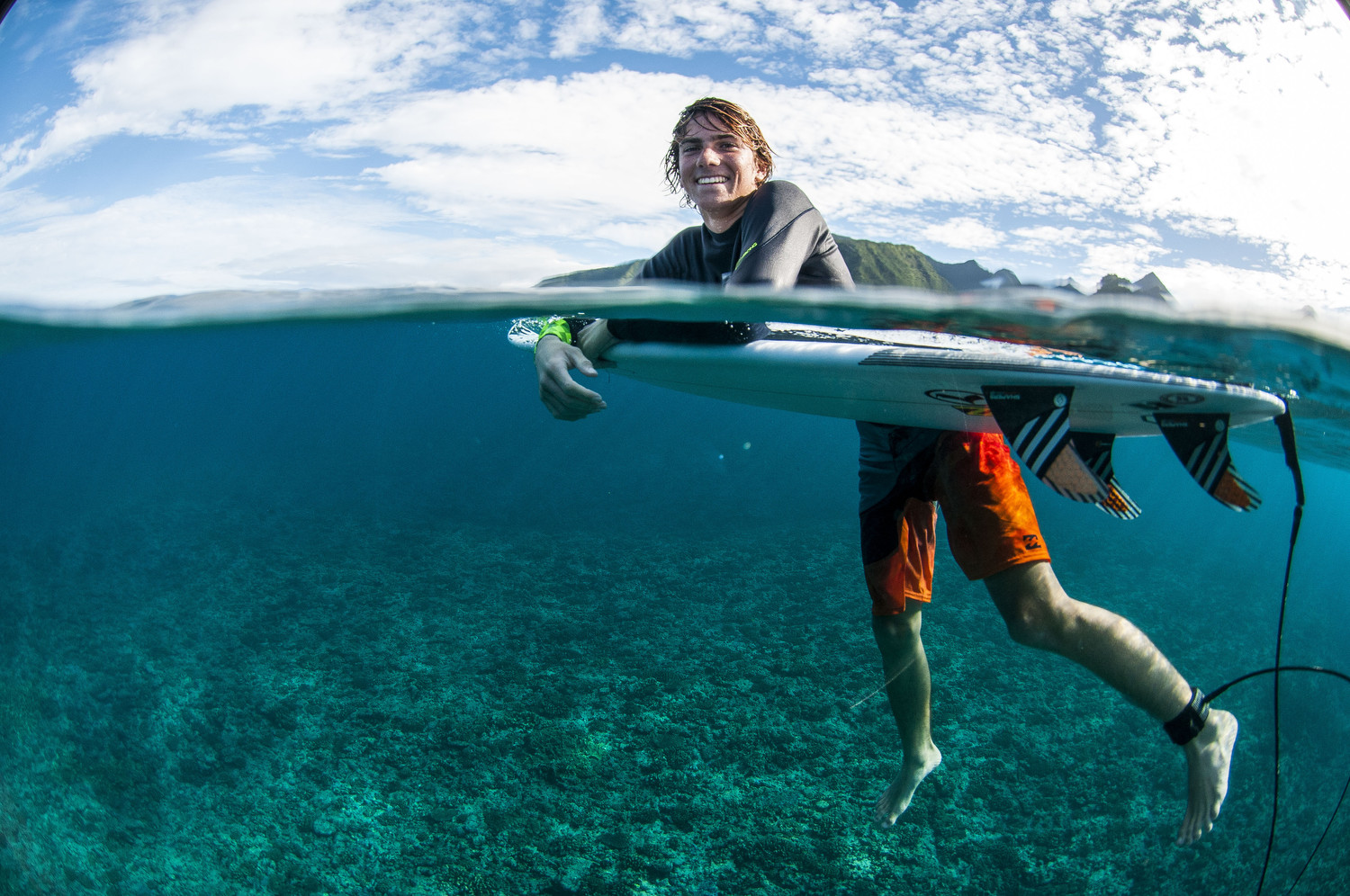
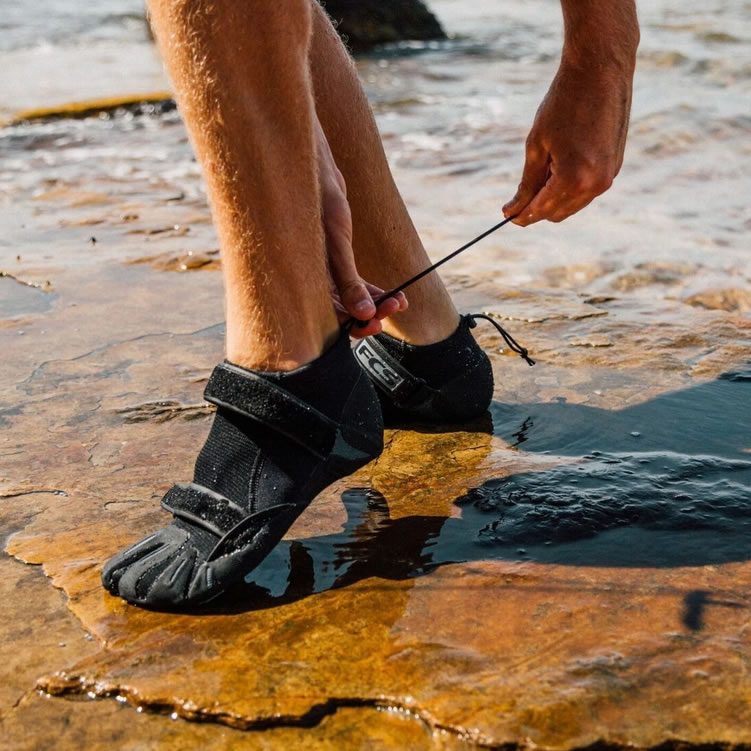
4. Protect your feet
If you thinks it´s necessary, protect your feet. You have two solutions:
- Wear neoprene booties. It will facilitate your entry and exit, and if you touch the bottom with your feet you will be protected.
- Wear neoprene socks to remove and put on. Even if the wetsuit brands make the booties really thin, it is always more comfortable to surf without them. Socks to remove and put on, such as the Rip Curl Pocket Reef Boot, protect your feet while you come in and out, when you need it most. When you surf, you put them in your pocket and surf without them.
5. Protect your back
In case of wipe out, it is usually the back that touches the reef.
A neoprene top or the shorty offer a good protection to your back.
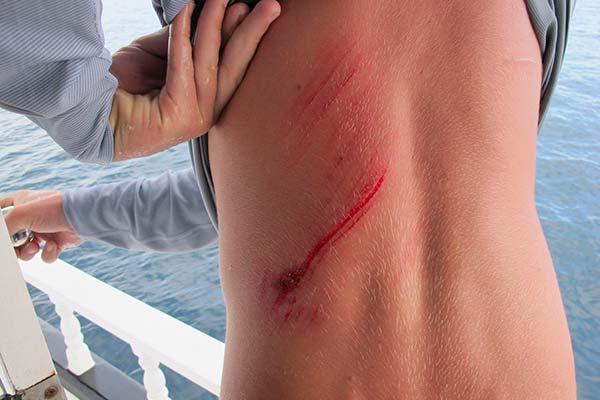
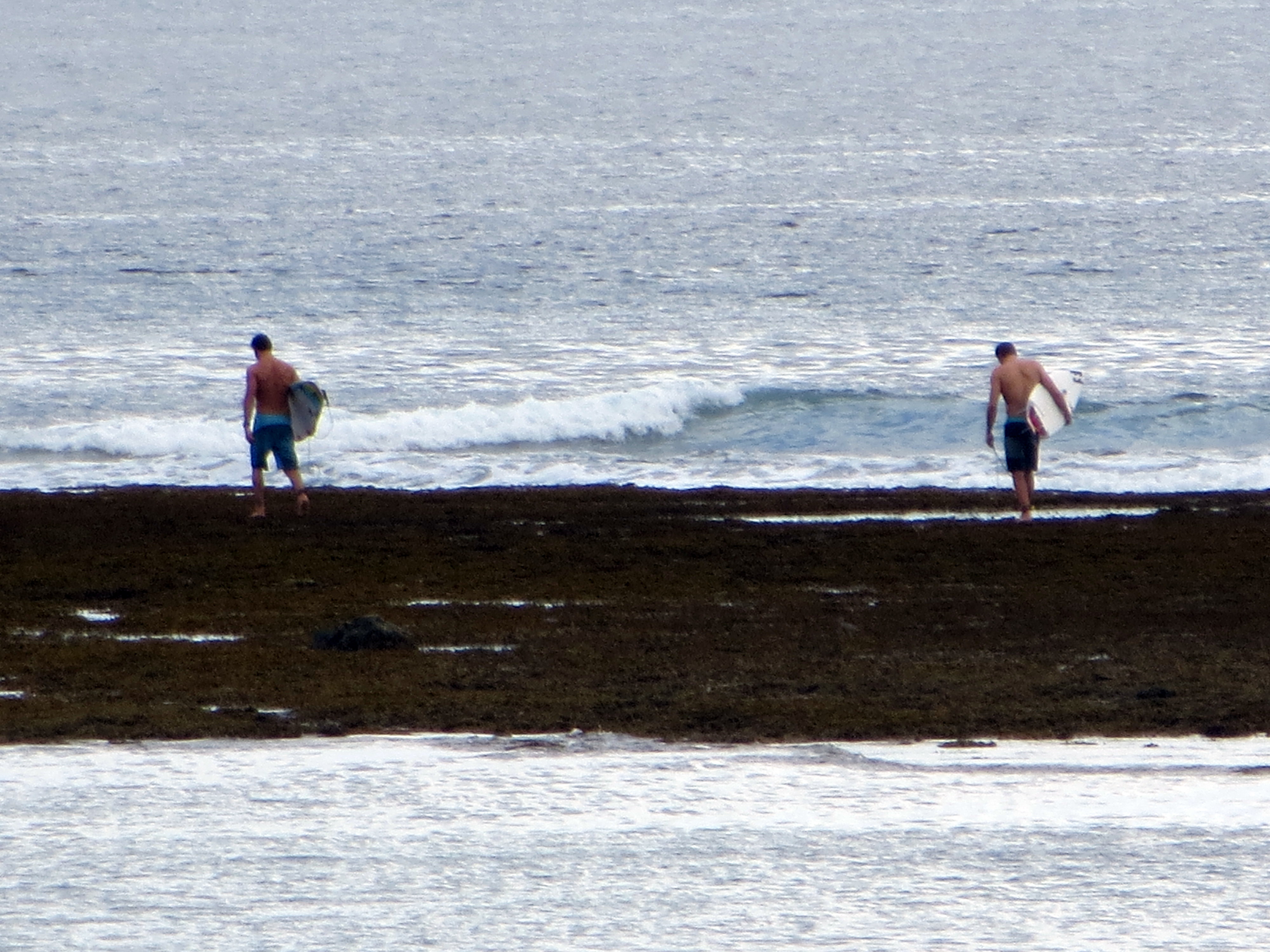
6. Learn to walk on a reef
Go slowly, no hurry. The bottom is not flat, there can be holes, you can step on live coral that will break under your weight.
7. Have a first aid kit with you
All those tips helps to reduce the risk, but at the end, we always hurt ourselves. It is important to disinfect cuts well. You should always have with you:
- Disinfectants. Those in cream are very handy.
- Steri-strip in case of deeper or longer cuts
- Antibiotics against infections such as Amoxilicin. In many countries you can buy this type of medication without any prescription. If you see symptoms of infection, inflammation or white liquid, and you do not have a doctor close, take 7 days of antibiotics. In tropical areas, cuts can easily get infected.
Some surfers go even further by having needles and threads to anneal themselves, or else Loctite glue to stick the cuts and surf the next day. A bit extreme techniques, personally I prefer the option of having travel insurance and going to the hospital when needed.
It is also important to know your skills and not paddle out if you do not have the appropriate skills. Some waves, like SuperSucks, Padang-Padang, Desert Point, require a lot of experience and skills and are very dangerous, even if they look perfect from the shore. You have to accept the natural selection that operates, and recognize that you do not have the skills when you do not have it, unless you are Kamikaze!
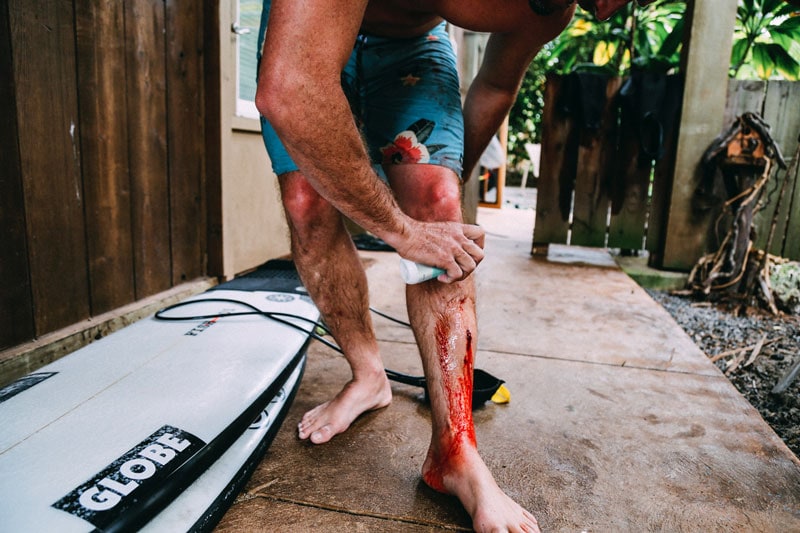
Products recommended for you:

Sebas
Sebas is the passionate creator and founder of Mundo-Surf, a space dedicated to those who live and breathe surfing. With a deep connection to the ocean and an overflowing passion for every wave, Sebas has turned his love for surfing into a mission: to share, inspire, and educate the community.
In addition to being an avid surfer, Sebas is an expert in surfboard manufacturing, an art that combines technique and creativity. Through his blog, he not only offers guides, reviews, and advice but also shares his experience in surfboard creation, helping others understand the process behind each design and material. At Mundo-Surf, Sebas invites us all to discover surfing at its fullest, from the right equipment to the personalized creation of surfboards.




